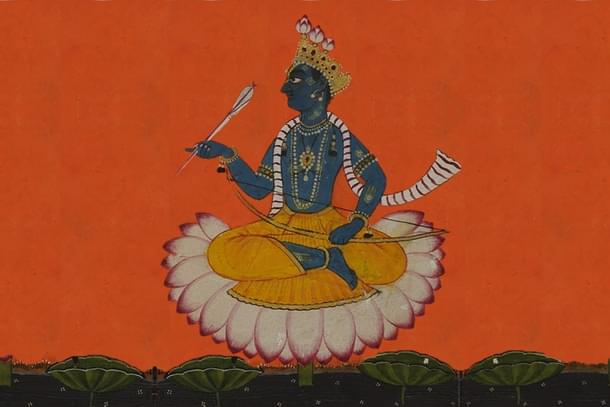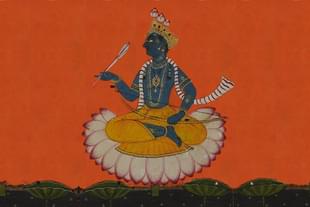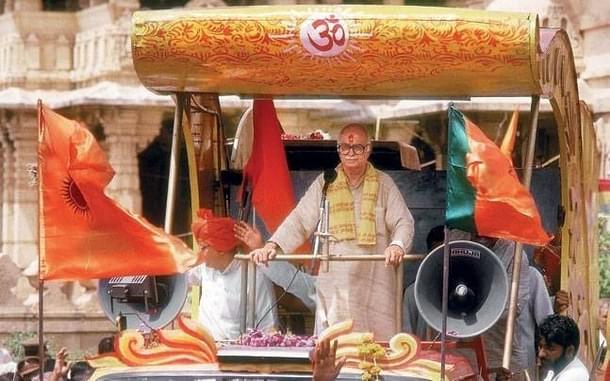Commentary
Ram Mandir: A Civilisational Triumph
Vikas Saraswat
Jan 11, 2024, 04:48 PM | Updated 10:55 PM IST
Save & read from anywhere!
Bookmark stories for easy access on any device or the Swarajya app.


In a departure from the long-held Marxist notion that human history was merely a history of class struggles, historians and intellectuals, notably Arnold Toynbee onwards, begun to veer around a different understanding. History of mankind is now increasingly seen as the history of the rise and fall of civilisations.
Toynbee in his seminal 12 volume work, A Study of History, has studied 21 world civilisations. At the end, he concurs that the world today is left with four major civilisations, three out of which are progression or alteration of previous ones.
Among them, according to Toynbee, Christianity and Islam have morphed from the Minoan civilisation and the Far East — Chinese, Japanese civilisation have sprung up from the Shang civilisation.
Among these four, the Indic or Hindu civilisation stands out as the only enduring one. For someone who regarded religion as the cornerstone of civilisational ethos, Toynbee was rather critical of Hindus for their forbearance of Islamic marauders and iconoclasm.
Comparing it with the pulling down of an Eastern Orthodox Church by Polish people after the First World War, which the Russian occupation regime had built in Warsaw to humiliate the Poles, Toynbee said “Perhaps the Poles were really kinder in destroying the Russians’ self-discrediting monument in Warsaw than you (Hindus) have been in sparing Aurangzeb’s mosques”. Toynbee was referring here to the three mosques in Kashi, Mathura and Ayodhya.
This month, however, Hindus would be disabused of one of these three stigmas.
The Ram temple at Ayodhya is probably the second incident in the history of Independent India when a temple has been completely taken back from Islamic control, Pavagarh being only a partial reversal.
The first was a rather low key affair at Daulatabad Fort where a Jain temple complex, razed and converted into a mosque by Alauddin Khilji, was taken back on the next day of Hyderabad Police action.
However in this case, it was an idol of Bharat Mata that was installed to contain flaring up of the act into a Hindu-Muslim issue. In that sense it was an act of Hindu defiance against the despotic Nizam regime, albeit not completely free of collective Hindu diffidence.

Reclaiming Ram temple, on the other hand, has been an act of grit, determination and resilience at a scale which denotes the rumble of a civilisation breaking free from old and rusted shackles.
In his famous theory, Toynbee postulates that civilisations continue to grow only when they successfully meet one challenge after the other, in a series of ‘challenges and response’.
Hindu history is replete with instances of heroic resistance against Islamic invasions. Although the Hindu response to Islamic challenges was more in the nature of containment rather than repel and throw out the enemy, it ensured that the civilisation breathed, though bruised and battered.
There are several instances, illustrated most compellingly by historian Meenakshi Jain, which show the Hindu perseverance to reclaim their sacred places. These efforts succeeded sometimes, failed at times and forced Hindus to settle for a compromise as close as possible to the original sanctum sanctorums at yet other times.
Ayodhya, however, stands out as the most gallant tale of Hindu dauntlessness. At Ayodhya, Hindus have had to contend not only with Islamic iconoclasm and its usurper zeal but also the corrupt, venal and anti-Hindu secularism.
If centuries of Islamic rule had forced boundless humiliation on Hindus, European colonialism made all efforts to induce a deep sense of shame in Hindu living.
Post-Independence politics and Marxist intelligentsia continued the abuse by denying Hindus not only their historic victimhood but also extolling out and out anti-Hindu politics as secular goodness.
Centuries of physical and psychological oppression, topped up with ‘secular’ self loathing had made Hindus retreat into a shell. The Indian establishment, which viewed the Kashmir problem solely as a case to assuage Muslim sensibilities, even after Hindus had been ethnically cleansed out of Kashmir Valley, had become a virtual facilitator of Hindu genocide.
The secular establishment, which upturned the Supreme Court verdict upholding a measly Rs 180 per month maintenance to a 70-year-old Shah Bano under the pressure of Muslim mobs, shamelessly trampled upon the majority Hindu sentiments when it came to the Ram temple.
From denying Ram’s existence to demanding his proof of birth at exactly the contested place, Hindus were ridiculed and derided by mainstream Indian politics. The temple movement had so deranged the establishment that it started playing up its own failures to snub the demand.
It never occurred to the ‘secular’ establishment that by juxtaposing poverty, healthcare and illiteracy to the Ram temple demand it was only highlighting its own miserable record on all the counts.
But the protracted Ram Mandir movement and the final triumph at Ayodhya has not just reclaimed a sacred site, it has also shattered the Hindu mental siege. The changed political and intellectual landscape in the country is a testimony to that.
No wonder a formidable intellectual, Sir V S Naipaul, saw Babri demolition as “India’s new, historical awakening”. Going against the popular lament in intellectual circles, Naipaul famously described the demolition at Ayodhya as “a sort of passion (which needed) to be encouraged”.
Ayodhya is a reminder that civilisations might be an embodiment of distinct art and architecture, shared common past and lofty socio-cultural values but all that greatness by itself cannot ensure their preservation. It needs standing up firmly for the civilisational values and making sacrifices if need be. If some of these civilisational battles prolong for decades or even centuries, the pushback has to be equally dogged.
After a five centuries long struggle, when the Ram temple comes up at Ayodhya this month, we will be witnessing the healing of what Naipaul called a wounded civilisation. 22 January 2024 will be an epoch-making event like few in history.
Only during the Spanish Reconquista, churches in Cordoba, Toledo and Gibraltar had seen restitution from the clutches of Islamic imperialism. Apart from that a few mosques in Bulgaria, Hungary and Greece which were built after demolishing churches were restored after the downfall of the Ottoman Empire. But outside Europe, Ayodhya is the only major success against Islamic iconoclasm.
Hindu blood, toil and sacrifice for Ram temple has got the civilisation counted as living rather than merely existing.
Arnold Toynbee had a very interesting take on history. He said that more than just a sequence of events, history was “God revealing Himself”. Ramlalla, the infant Lord, getting ready to give audience to His devotees from His new abode will be a literal fulfilment of Toynbee’s prophecy.





